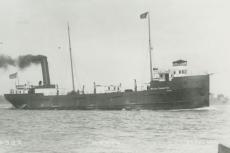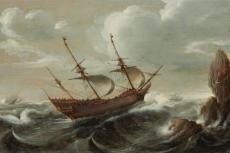Fish thrive on WWII shipwrecks
NOAA exploration of North Carolina wrecks offers detailed glimpse into unexpected “islands of habitat.”
In 2016, the National Oceanic and Atmospheric Administration (NOAA) undertook a closer examination of the wrecks of the German U-boat U-576 and the Nicaraguan freighter SS Bluefields, using glass-domed submersibles. The two historically significant and deep (200m) shipwrecks sank near one another on the continental shelf of North Carolina, USA, during World War II.
Even though shipwrecks that are the focus of archaeological surveys also form habitat for diverse flora and fauna, shipwrecks are often studied separately by archaeologists and ecologists. This exploration was different in being a joint ecological–archaeological undertaking, the results of which have just been published in Ecosphere, the journal of the Ecological Society of America.
The researchers used lasers to acquire 3D snapshots of fish to a millimetre level of precision. For instance, the detailed photos allowed the team to measure the size of a grouper hovering beside the rivet of the U-boat’s hull or to document the position of a wreckfish beside the barrel of the deck gun.
A fundamental goal of ecology is to understand the relationships between species and their habitats. For example, researchers seek to understand why fish populations decide to call a shipwreck home rather than a rocky reef—or the significance of wrecks and artificial reefs where there are no other solid structures, say, on sandy or muddy seabeds.
Scientists also want to find out how fish find these remote sites in the first place. “Since the shipwrecks are such small islands of habitat on the sandy seafloor, it was surprising to see so many large-bodied groupers, like snowy and Warsaw grouper, occupying the shipwrecks,” said Avery Paxton, a research associate at NOAA.
Shipwrecks can form “islands” in a biogeographical sense. These are isolated habitats spread out over otherwise inhabitable or unfavourable surrounding environment.
Island biogeography explained

- Log in to post comments
















































